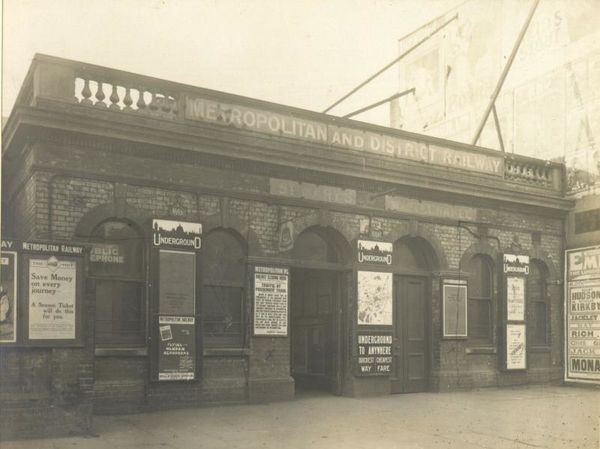
St Mary’s: the nearly invisible station
Introduction
Walking along Whitechapel Road in east London today, you might not realise that underneath your feet lies the remnants of an early Underground station that was closed in 1938, converted into a Second World War air raid shelter and twice damaged by bombs. While on the surface little of the former St Mary’s station exists, a small part of London’s history still remains underground.
Expansion
St Mary’s station, also known as St Mary’s (Whitechapel), first opened on 3 March 1884. It is positioned on the south side of Whitechapel Road virtually opposite Davenant Street today. The very first section of London’s Underground had only opened in 1863, so the station was part of the early phases of the network’s expansion.
St Mary’s was built by the East London Railway (ELR), although it was funded by the Metropolitan Railway and District Railway to be part of their joint line. It was an extension that linked the ELR north of Shadwell with the Metropolitan and District line at St Mary’s.
The station had a single-storey brick-built building with arched windows and fanlights above the doors. The booking hall led to a lattice iron footbridge under the main road, with cramped stairways leading down to two platforms. The roof was supported by cast-iron columns. The westbound platform had an open ventilation space at its rear.
For its first seven months St Mary’s was served only by the South Eastern Railway (SER), from Addiscombe Road, Croydon. From 6 October 1884, as part of the work on the final stage in the completion of the Inner Circle – today’s Circle line – the station was brought into full passenger use on the Metropolitan and District. A month later both companies began running through services on the East London Railway via St Mary’s. The Metropolitan trains ran to the SER’s station at New Cross (which is the current New Cross station on the Overground network), and the District used the ELR’s New Cross station (now demolished).
The newly electrified Met and District withdrew from the steam operated ELR in 1905/6, resuming when the East London was itself electrified in 1913.
Closure
For most of its existence, St Mary’s led an uneventful life. For a time, weekend traffic was so low that the station was closed at weekends, but all-week opening was restored from 1921. On 26 January 1923, the station changed its name to St Mary’s (Whitechapel Road).
Having never been highly used, the station closed from 1 May 1938 because it was felt that new eastern entrances into the neighbouring re-sited Aldgate East station would provide a replacement. The closure went relatively unnoticed, but as the clouds of war gathered on the horizon, St Mary’s was to have a new chapter in its story.
War
In spring 1940, tenancy of the station was transferred to Stepney Borough Council, who paid for alterations so that the station could be used as an air raid shelter.
The work was to include the construction of eight-foot-high running walls along the platform edges and a false concrete ceiling to protect shelterers from falling masonry. At street-level it was also to involve the bricking up of two of the windows, the screening of the skylight over the stairway and the addition of a baffle wall to the building’s western end. Other facilities were to include chemical toilets, drinking water and electric lighting.
However, after starting work the builders discovered the platforms were wooden with an asphalt surface, which had to be strengthened with concrete. Progress was also affected when, on 22 October 1940, a high explosive bomb fell behind the station. The ticket office and parts of the stairway were destroyed. Ultimately the street-level building had to be demolished.
A new entrance was built of a windowless utilitarian design with two doorways and platform-level alterations continued. Yet such were the hazards of wartime London that the station was destroyed by another high explosive bomb which landed on the street outside on the night of 19 April 1941, with eight people killed. A passage was dug from the surviving stairwell through to the sub-basement of the building next door, thus giving shelterers a room.
Hidden remains
After the war, the station site became wasteland. The street-level site has now been redeveloped and nothing obviously visible survives. However, a stairway descends from street level to the remains of the westbound platform. The eastbound platform still exists, as does the station footbridge, not including its stairs, and the vestiges of what was probably a lamp room.
What remains at platform level still bears the features of air raid conversion, including the screen walls and false concrete ceiling that were constructed, part of the shelter ventilation system, some wooden benches and even a group of cubicles that would have housed the chemical toilets. It is an eerie space, with echoes of wartime life.
St Mary’s is one of many hidden corners of the London Underground network to have been closed, abandoned and adapted and with that history largely unknown and unnoticed. The station features in episode 5 of the television documentary ‘Secrets of the London Underground’. Other wartime uses of Underground stations are explored in our Hidden London exhibition.













